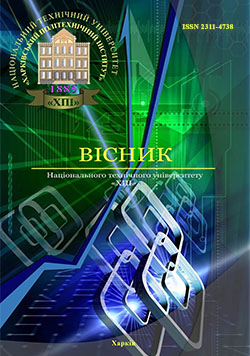DEFORMATION FIELD OF COMPETENCE IN INNOVATIVE PROJECTS
DOI:
https://doi.org/10.20998/2413-3000.2017.1224.1Keywords:
competence, competence field, taxonomy competence, innovative project.Abstract
The use of a competence-based approach in the programs of innovative development organizations is considered. An analysis of the latest achievements in the world and Ukraine in the field of application of the competency approach in the programs of organizational development is done. The principles of Bloom's taxonomy to generate fields of competence and expertise are given. The principle of the curvature of field of competencies in innovative projects and programs is formulated. Application of the model taking into account the deformation of the competencies of the field allows to increase the accuracy of the model and to determine the trajectory of development of competence of project managers, teams, and organizations. An example of an organization competency assessment based on IPMA Delta model is given. The successful implementation of innovative projects and programs provided by the creative use of competency approach. This approach can be used as a common language of communication, which brings together the organization and employees, tasks and performers. Thus the development of the organization and development of personnel takes place at the same time.
References
1. P2M: A guidebook of Program & Project Management for Enterprise Innovation. 3rd ed. Japan, Project Management Association of Japan, 2015. 366 p.
2. Individual Competence Baseline for Project, Programme & Portfolio Management, 4th ed. International Project Management Association, 2015. 415 p.
3. Neizvesny S., Haritonov D. A., Rogozina V. B. Algebra Project Management methodologies based on genomic model. Managing the development of folding systems. 2013, no. 15, pp. 46–48.
4. Bushuyev S. D., Kharitonov D. A., Rogozina V. B. Organizational Project Management pathology. Managing the development of folding systems. 2012, no 10, pp. 5–8.
5. Bushuyev S. D., Bushueva N. S., Babayev I. A., Yakovenko V. B., Grisha E. V., Dzyuba S. V., Voitenko A. S. Creative project management technologies and programs: monograph. Kyiv, Summit book, 2010. 768 p.
6. Bushuyev S. D., Wagner R. F. IPMA Delta and IPMA Organisational Competence Baseline (OCB): New approaches in the field of project management maturity. International Journal of Managing Projects in Business. 2014, vol. 7, iss. 2, pp. 302–310. doi.org/10.1108/ijmpb-10-2013-0049
7. IPMA Organisational Competence Baseline (IPMA OCB). IPMA, 2013. 67 p. doi.org/10.1108/ijmpb-10-2013-0049
8. Global alliance for project performance standards. Available at: http://www.globalpmstandards.org/ doi.org/10.1524/9783486851144.339
9. Kerzner H. In search of excellence in Project Management. VNB, 1998. 274 p.
10. Kerzner H. Strategic Planning for Project Management Using a Project Management Maturity Model. John Wiley & Sons Inc, 2001.
11. Forsberg K., Mooz H., Cotterman H. Visualizing Project Management. 3rd ed. New York, John Wiley and Sons, 2005, pp. 108–116, 242–248, 341–360.
12. Slivitsky А. Value migration. Маnn,Ivanov& Ferber, 2006. 432 p. doi.org/10.4135/9781452229805.n683
Downloads
Published
Issue
Section
License
Copyright (c) 2017 Сергей Дмитриевич БУШУЕВ, Денис Антонович БУШУЕВ, Руслан Федорович ЯРОШЕНКО

This work is licensed under a Creative Commons Attribution-NonCommercial-ShareAlike 4.0 International License.
Our journal abides by the Creative Commons copyright rights and permissions for open access journals.
Authors who publish with this journal agree to the following terms:
Authors hold the copyright without restrictions and grant the journal right of first publication with the work simultaneously licensed under a Creative Commons Attribution-NonCommercial-ShareAlike 4.0 International License (CC BY-NC-SA 4.0) that allows others to share the work with an acknowledgement of the work's authorship and initial publication in this journal.
Authors are able to enter into separate, additional contractual arrangements for the non-commercial and non-exclusive distribution of the journal's published version of the work (e.g., post it to an institutional repository or publish it in a book), with an acknowledgement of its initial publication in this journal.
Authors are permitted and encouraged to post their published work online (e.g., in institutional repositories or on their website) as it can lead to productive exchanges, as well as earlier and greater citation of published work.

